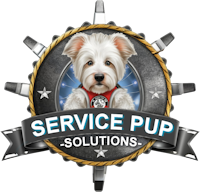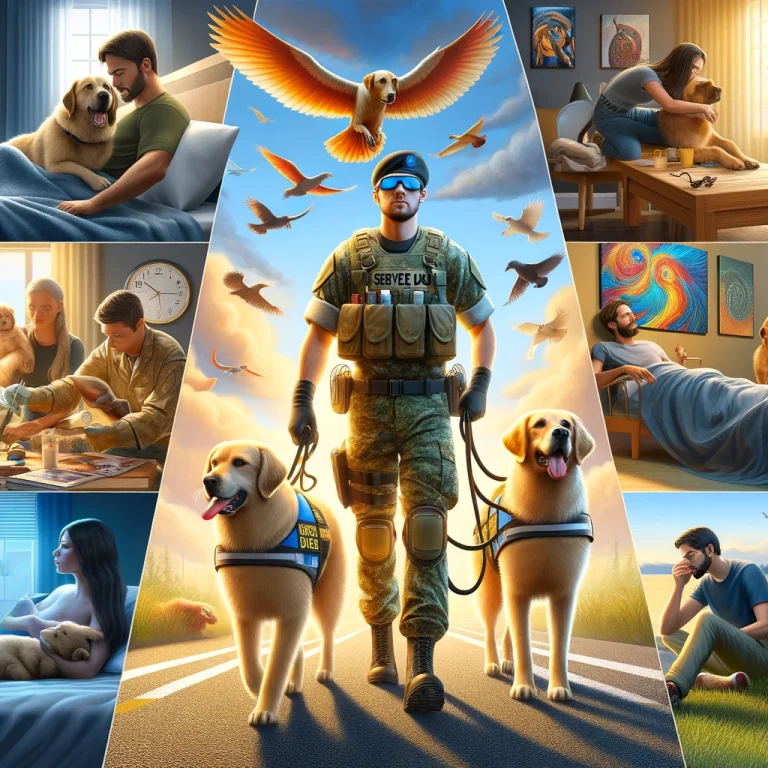Introduction
Getting a service dog is a life-changing decision that can bring immense support, independence, and companionship into your life. However, for many new service dog owners, the transition comes with challenges and potential pitfalls. Knowing the common service dog mistakes that others have made can save you from unnecessary stress and setbacks. In this comprehensive guide, we’ll explore the top 10 mistakes new service dog owners make and how to avoid them.
By the end of this guide, you’ll understand how to steer clear of the most frequent mistakes made by new service dog owners, ensuring a smooth and successful partnership with your furry companion.
1. Not Having Clear Expectations
One of the biggest mistakes new service dog owners make is not having clear expectations of what a service dog can and cannot do.
Solution:
Create a list of tasks you need assistance with and understand the training required to perform them effectively. A service dog can’t be expected to do everything, so focus on tasks that will have the most significant impact on your life.
2. Choosing the Wrong Dog Breed
Selecting a breed that doesn’t align with your lifestyle or assistance needs can lead to frustration for both you and your dog.
Solution:
Research breeds that are best suited for specific service tasks. For instance, Labradors and Golden Retrievers are often ideal for mobility assistance, while Poodles are known for medical alerts. Choose a breed that matches your activity level and living environment.
3. Ignoring Professional Help
Training a service dog is no easy task. Many new owners try to go it alone and end up reinforcing training pitfalls instead of establishing good habits.
Solution:
Seek guidance from professional trainers or reputable organizations. Even if you plan to self-train, enrolling in training classes or consulting experts will provide you with the right techniques and strategies. For those who prefer a self-training approach, specialized programs are available through ServiceDogOwners.com, offering comprehensive resources to help guide you through the process.
4. Skipping Public Access Training
Service dogs are allowed in public places, but only if they are well-behaved and trained to handle different environments.
Solution:
Include public access training as part of your service dog’s routine. Expose your dog to crowded places, transportation, and unfamiliar settings while rewarding calm behavior. This helps your dog build confidence and adapt to various environments.
5. Neglecting Health and Grooming Needs
Healthy service dogs perform better. However, many new service dog owners overlook their dog’s health and grooming needs, impacting performance and well-being.
Solution:
Schedule regular vet check-ups, invest in comprehensive pet insurance, and maintain a grooming routine. High-quality service dog products like dietary supplements, harnesses, and grooming tools are essential.
6. Lack of Consistent Training and Reinforcement
Service dogs require consistent training and reinforcement to maintain their skills. Without it, their performance can deteriorate.
Solution:
Set aside time for regular training sessions. Reinforce commands and tasks daily using positive reinforcement techniques like treats, toys, and praise.
7. Overworking or Underworking Your Service Dog
Overworking your service dog can lead to burnout, while underworking them can result in boredom and behavioral issues.
Solution:
Balance your service dog’s work with playtime and relaxation. Provide engaging toys and activities to keep them mentally stimulated, and allow them ample rest time.
8. Assuming Your Service Dog Can Handle Every Situation
Even the best-trained service dogs have their limits. Expecting them to handle every situation flawlessly can lead to disappointment.
Solution:
Recognize your service dog’s strengths and weaknesses. Avoid overwhelming situations and have backup plans in case your dog needs assistance.
9. Not Setting Boundaries with the Public
People often want to pet and interact with service dogs, but this can distract them from their tasks.
Solution:
Educate the public politely but firmly about your service dog’s role. Use gear like vests or harnesses with “Do Not Pet” patches to signal that your dog is working.
10. Failing to Bond with Your Service Dog
The relationship between a service dog and its handler is based on trust and understanding. Not investing in bonding activities can hinder this relationship.
Solution:
Spend quality time with your service dog outside of work tasks. Go for walks, play games, and engage in positive activities that strengthen your bond.
The Importance of Pet Insurance and Service Dog Products
Pet Insurance
Comprehensive pet insurance is crucial for covering medical expenses, accidents, and illnesses. A well-insured service dog is more likely to receive the best care without financial strain. ServicePupSolutions.com can help you find the best coverage for your service dog.
High-Quality Service Dog Products
Investing in the right service dog products can significantly improve your dog’s effectiveness and comfort. From harnesses and training tools to grooming supplies, prioritize quality to support your service dog’s health and performance.
Conclusion
Avoiding these common service dog mistakes will help ensure a successful partnership with your service dog, providing the support, independence, and companionship you deserve. By setting clear expectations, maintaining consistent training, and investing in their health and well-being, you can cultivate a fulfilling and effective relationship with your service dog.
Searching for a way to boost your income while keeping your service dog by your side? Click here to start your side hustle and increase your earnings alongside your loyal companion.





